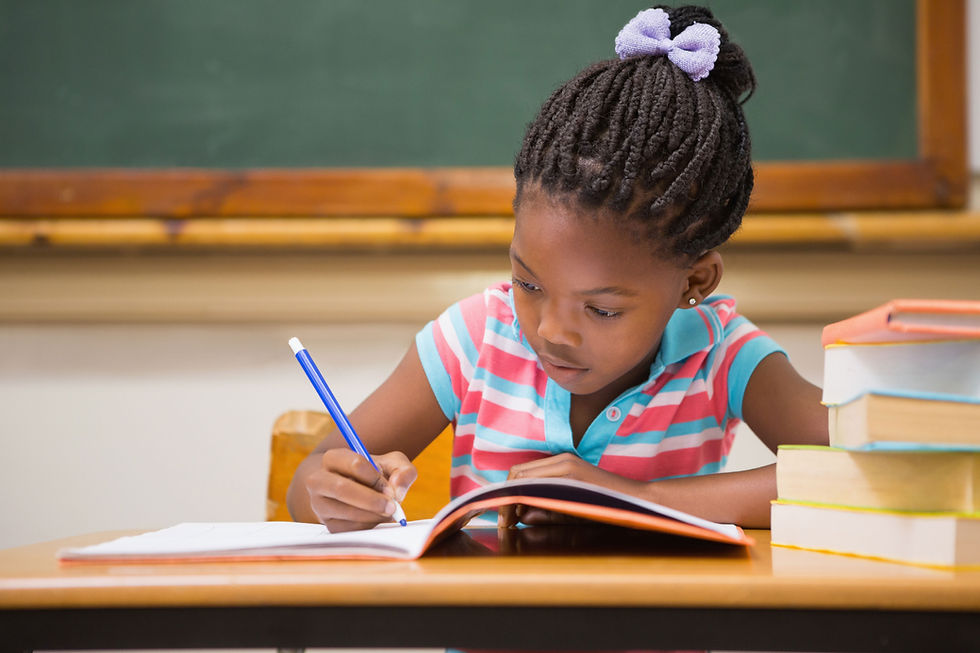Why Safe and Inclusive Classrooms Are Key to Student Success
- jgergler
- Sep 10
- 3 min read
When we think about what makes students succeed, we often point to teachers, textbooks, or test scores. But there is another factor just as important — and sometimes overlooked: the classroom environment itself.
A safe, inclusive classroom is not just a physical space. It is an environment where every student feels secure, valued, and capable of learning. Without these conditions, even the best curriculum and most dedicated teachers cannot unlock a child’s potential. For students in underserved communities, especially in Northeast Brazil, the difference between a supportive environment and an unsafe one can determine whether they stay in school or walk away.
At G&N Foundation, we believe that quality education depends on safe, inclusive classrooms. Here’s why they matter — and how we can help build them.

Safety as the Foundation of Learning
Children cannot focus on lessons if they are worried about their basic needs or safety. A safe classroom provides:
Physical security: Solid infrastructure, clean water, proper sanitation, and well-maintained facilities.
Freedom from violence: Protection against bullying, harassment, and discrimination.
Emotional safety: The assurance that mistakes will be treated as learning opportunities, not punishments.
In many public schools in Brazil, classrooms still lack basic safety. Some buildings are in poor condition, bathrooms are unhygienic, or classrooms are overcrowded. For children, these conditions send a message: their learning is not valued. Improving school safety is not a luxury — it is a prerequisite for education.
Inclusion as the Key to Belonging
Safety alone is not enough. Classrooms must also be inclusive, ensuring that every child, regardless of gender, race, disability, or background, has the opportunity to thrive.
An inclusive classroom provides:
Equal participation: Students of all abilities are encouraged to engage.
Representation: Learning materials reflect diverse cultures, languages, and identities.
Support for special needs: Adapted materials and trained staff to serve students with disabilities.
Respect for diversity: Celebrating differences instead of ignoring them.
In communities with high inequality, inclusivity is a powerful tool for breaking cycles of exclusion. When students feel they belong, they are more likely to remain engaged and succeed.
The Impact on Student Success
The evidence is clear: safe and inclusive classrooms improve academic and social outcomes. Students in such environments are more likely to:
Attend school regularly.
Achieve higher grades and test scores.
Develop confidence, leadership, and empathy.
Form positive relationships with peers and teachers.
For vulnerable students, these benefits can mean the difference between dropping out and graduating. A safe, welcoming classroom gives them the stability and encouragement that may be missing in other areas of their lives.
Barriers That Remain
Despite progress, challenges persist in Brazil and other developing regions:
Underfunded schools lack resources to maintain safe facilities.
Overcrowded classrooms reduce the ability to meet diverse needs.
Bullying and discrimination continue to harm students emotionally and academically.
Limited teacher training on inclusion and diversity.
Addressing these barriers requires more than infrastructure investment. It requires a shift in mindset that values the whole child, not just their academic performance.
How G&N Foundation Supports Safer, More Inclusive Learning
At G&N Foundation, we work to ensure that every child has access to a classroom that is safe, welcoming, and inclusive. Our initiatives include:
Partnering with schools to improve infrastructure and learning environments.
Supporting teacher training in inclusivity and emotional wellbeing.
Promoting programs against bullying and discrimination.
Encouraging community involvement to make schools central, supportive hubs.
We believe that when classrooms reflect safety and inclusion, they also reflect hope.
Final Thoughts
Classrooms should be places where children not only learn but also feel valued and protected. For many students, especially in underserved communities, this is not yet the reality. But it can be.
When we invest in safe, inclusive classrooms, we invest in student success.Together, we can ensure that every child has a learning environment that builds knowledge, nurtures confidence, and inspires dreams.





Comments